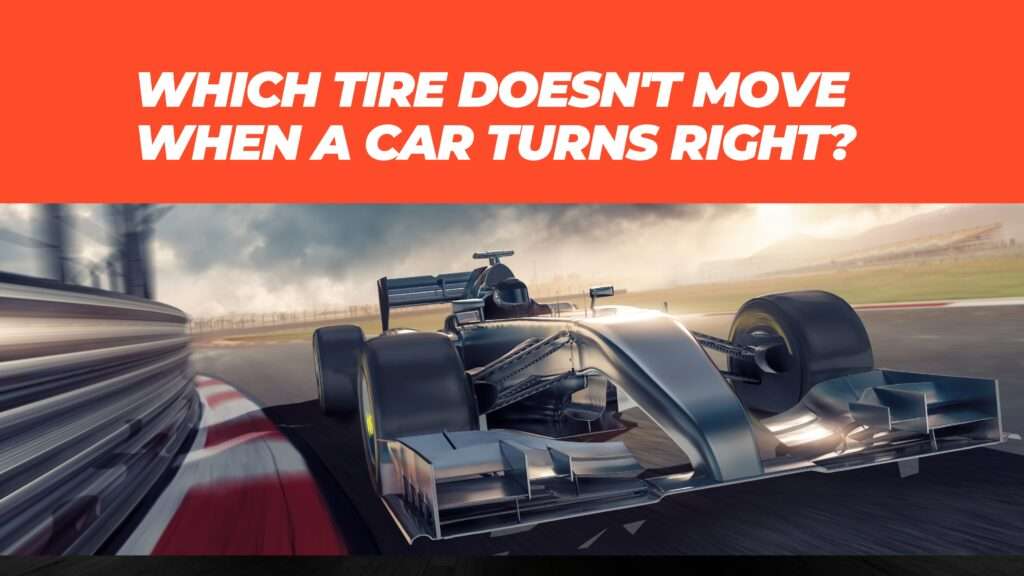Have you ever wondered about the intricate mechanics of your car when making a right turn? The answer lies in the wheels that steer your vehicle. In this article, we will delve into the fascinating world of automobile dynamics and answer the burning question:

Which tire doesn’t move when a car turns right?
Before we proceed, let us clarify some fundamental terms.
1. Tires
Tires are rubber components that provide traction between a vehicle and the road. They play an important role in vehicle performance and safety.
2. The wheel
Wheels are metal or alloy rims on which tires are mounted. The tire is supported structurally by them.
3. Axis
A vehicle’s axles connect the wheels on both sides and transmit power from the engine, enabling movement.
4. Steering mechanism
A steering mechanism is a system that allows the driver to control the direction of the front wheels.
The Role of Tires in a Right Turn, When you make a right turn in your car, several factors come into play that determine which tire doesn’t move:
1. Front wheel
In most cars, the front wheels are responsible for steering. When you turn the steering wheel to the right, the front wheels will turn accordingly. The right front tire plays an important role in executing the turn.
2. Rear wheel
The rear wheels usually do not steer. They are relatively straight when turning right. However, their level of involvement depends on the type of vehicle.
3. Differential
The differential is an important element in this context. This allows the two rear wheels to rotate at different speeds as needed. This is essential for maintaining stability during a turn, especially when the road surface is uneven.
Rear-wheel vs. front-wheel drive
To understand which tire does not move when turning right, we also need to consider whether the vehicle is rear-wheel drive or front-wheel drive.

Rear-wheel drive vehicles
In rear-wheel drive cars, the rear wheels are responsible for transmitting power from the engine to the road. When turning right, the right rear tire does not move as much as the left rear tire. This is because the outer wheel (right) covers more distance than the inner wheel (left) when turning.
Front-wheel drive vehicles
In front-wheel drive vehicles, the front wheels are responsible for both steering and power transmission. In this case, the right front tire does most of the work when turning right and the left front tire follows.
In conclusion, when a vehicle turns right, the tire that does not move significantly is the right rear tire on rear-wheel drive vehicles and the right front tire on front-wheel drive vehicles. Understanding these dynamics can help you appreciate the complex interplay of components that make driving possible.
Stay with us for car blog.
Now that you have gained insight into this intriguing aspect of car mechanics, you may have some questions. Let’s address some frequently asked questions:
FAQs

Some frequently asked questions
What happens in all-wheel-drive (AWD) vehicles?
In AWD vehicles, power is distributed to all four wheels, which means that all tires contribute to the turn to some extent.
Do tires play a role in left turns?
Yes, the tires on the opposite side of the turn play a significant role in maintaining stability during left turns.
Can you feel this difference when driving?
In most cases, the driver doesn’t notice this subtle difference in tire movement during right turns.
Why is this knowledge important for drivers?
Understanding how your car behaves during turns can enhance your driving skills and improve safety on the road.




